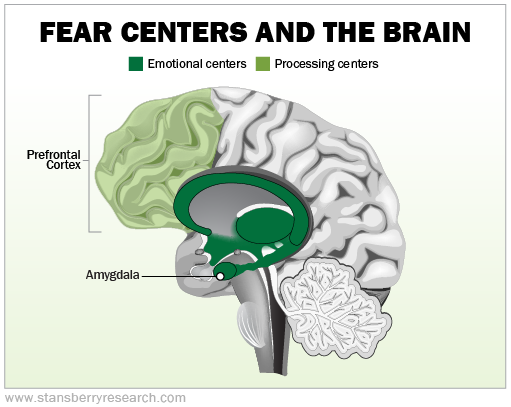When you think aerobics, it might take you back to Richard Simmons' VHS tapes in the 1980s...
But the aerobics craze didn't end with the leotards and headbands of the era. And it's a great way to extend your "healthspan" today.
Aerobic exercise utilizes breathing and oxygen to improve the performance of your heart and blood vessels (otherwise known as your cardiovascular system). Doing aerobics – or "cardio" – increases your breathing rate because your muscles need more oxygenated blood to meet the activity demands.
The key to aerobic exercise is to get your blood pumping. You'll know it's working if you're breathing faster. It works wonders for your overall health. And today, I'll let you know some of the best – and easiest – ways to add cardio to your life...
Exercise releases feel-good hormones. Dopamine, serotonin, oxytocin, and endorphins are released when you exercise. Each of these improves mood and lowers the sense of feeling stressed.
Because endorphins are the neurochemical messengers that keep you pushing through "flight or fight" situations, they release during aerobic exercise.
That's why runners often report feeling a "runner's high" – a rush of endorphins that releases as they push themselves.
What's more, we've also seen that exercise directly changes the brain's fear center – the amygdala. Some studies of mice found that aerobic exercise prevents dysfunction in the amygdala. (Yes, they essentially gave fitness classes to mice.) Working out keeps the fear center working properly instead of running wild.
A paper from the University of Pittsburgh looked at brain function and physical activity as we age. The researchers found that the part of the brain that regulates the amygdala's response, the prefrontal cortex, increased in volume and had improved blood flow with regular exercise.
Aerobics can help with "episodic memory," too...
Episodic memory is a type of long-term memory that details specific events and experiences from your past. These memories are associated with a particular time and place. Memories of your first date and what you ate for dinner last night are examples of episodic memory.
Episodic memory is one of the first types of memory to decline as we age. When episodic memory declines, everyday tasks become more difficult and social isolation increases.
Researchers at the University of Pittsburgh synthesized the data from more than 36 randomized controlled trial studies on how aerobic exercise affects episodic memory.
They analyzed nearly 3,000 adults aged 55 or older who hadn't yet experienced any cognitive decline. They tracked how often the study participants did aerobic dance and aerobic tai chi.
Participants with the greatest memory improvements consistently exercised for at least 150 minutes of aerobic activity per week. That could look like three 50-minute sessions or five 30-minute sessions each week, for example.
Researchers also determined that the sooner you start exercising, the better. Participants aged 55 to 68 saw greater memory improvements than those aged 69 to 85.
Dancing is one of my favorite ways to get in some cardio.
It's also particularly helpful for folks with Parkinson's disease...
Nearly 1 million Americans have Parkinson's, with about 160 new cases diagnosed every day.
Parkinson's disease is a disorder that attacks the neurons in your brain. Specifically, it kills the neurons that make dopamine. They're located in a part of the brain called the substantia nigra. The substantia nigra is important in motor movement, learning, and addictive behaviors.
That's why you might experience tremors or lose your balance. Other early symptoms include cramped handwriting, stooped posture, or stiffness in your arms and legs.
According to the UCSF Parkinson's Spectrum Disorders Center, the ideal exercises for Parkinson's are aerobic and learning-based ones. Exercises that challenge participants to change "tempo, activity, or direction" are best.
Dancing, it turns out, fits these requirements.
A review from Cardiff University in the U.K. looked at several randomized studies on dance. The dance programs improved motor movements, balance, and walking speed in Parkinson's patients. Not to mention, dancing is a great mood-booster.
So don't skip out on the cardio. I know it can sound daunting, but chances are you'll enjoy it more once you get going. Here are some other enjoyable ideas for your cardio inspiration:
- Power walking
- Swimming
- Hiking
- Stair climbing
- Cycling
- Rowing
- Hula-hooping
- Jumping rope
- Jumping jacks
- Boxing-style exercise classes
- Playing organized sports
Do what I do and take a brisk walk around the block in the afternoon sun. If I'm having a busy day and can't squeeze in a bike ride, I know I can still make time for a walk. Spend 150 minutes a week (22 minutes each day) doing moderate-intensity aerobics or 75 minutes a week (11 minutes each day) doing high-intensity aerobics.
And to get more out of your reading time, consider subscribing to my newest newsletter Prosperity Investor. With a subscription to Prosperity Investor, my team and I will keep you informed on the latest and most exciting opportunities that are cropping up in the health sector. And you'll also get to read in-depth analyses on other health-related topics like exercise and how to live healthier for longer. Click here to learn more.
What We're Reading...
- Something different: Scientists use an expensive laser beam to control lightning bolts.
Here's to our health, wealth, and a great retirement,
Dr. David Eifrig and the Health & Wealth Bulletin Research Team
March 14, 2023

